Assam
The Land of the Mighty Brahmaputra, Verdant Tea Gardens, and Enchanting Wildlife

Assam is a jewel of Northeast India, known for its lush landscapes, vibrant festivals, and warm hospitality. Home to the one-horned rhinoceros, sprawling tea estates, and the sacred Brahmaputra River, Assam is a blend of wilderness, spirituality, and cultural richness. From the mystical Kamakhya Temple to the rhythmic beats of Bihu, Assam captivates travelers with its timeless charm.
Must-Visit Attractions in Assam

Kaziranga National Park
A UNESCO-listed wildlife haven famed for its one-horned rhinos, tigers, and thrilling safaris along the Brahmaputra floodplains.
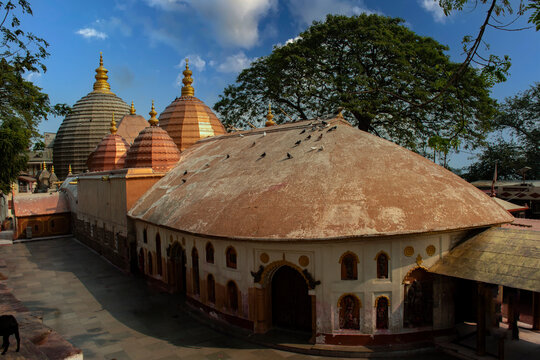
Kamakhya Temple (Guwahati)
The sacred Shakti Peetha atop Nilachal Hill, where the Ambubachi Mela celebrates the goddess’s divine feminine energy.

Majuli Island
The world’s largest river island, a cultural treasure of Neo-Vaishnavite satras and vibrant Assamese traditions.

Sivasagar – Ahom Legacy
Home to the majestic Rang Ghar (Asia’s oldest amphitheater) and the architectural marvels of Assam’s Ahom dynasty.
Heritage of Assam
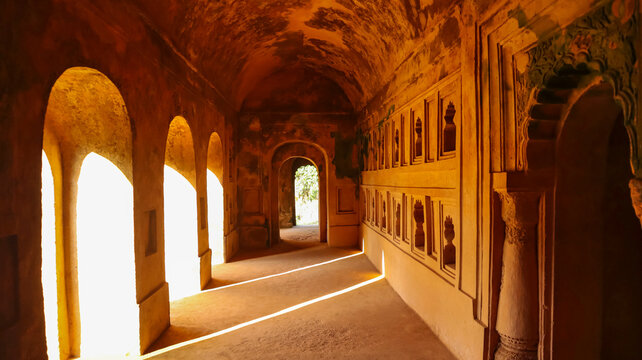
Assam’s rich history has been shaped by powerful dynasties like the Ahoms, Koch, and Chutias, whose enduring legacies are reflected in its grand monuments, vibrant literature, and living traditions. The state is dotted with architectural marvels, from the ancient Umananda Temple on Peacock Island to the celestial Navagraha Temple and the revered Hayagriva Madhava Temple. The Ahoms left behind a unique legacy of tank-and-temple complexes, blending spirituality with engineering brilliance. Beyond its plains, near the Assam-Meghalaya border, the mystical living root bridges of Jaintia Hills showcase nature’s harmony with human ingenuity. Each landmark tells a story of Assam’s glorious past and cultural resilience.
The Performing Arts of Assam
Assam’s performing arts are a vibrant reflection of its rich cultural heritage, blending spirituality, tradition, and community celebrations. The energetic Bihu dance, performed to the rhythmic beats of the dhol and pepa, captures the joy of the harvest season. Sattriya, a classical dance form nurtured in the state’s satras, is recognized by UNESCO for its grace and devotional themes. Folk traditions like Zikir and Zari (Islamic devotional songs) and Borgeet (Vaishnavite hymns) add to the state’s musical diversity. From the dramatic Ankiya Naat (one-act plays) to the pulsating Jhumur dance of tea tribes, Assam’s artistic expressions are as varied as they are captivating. These art forms not only entertain but also preserve the state’s history and spiritual ethos.
Music Form
Assam’s music echoes its cultural soul—from the devotional Borgeet (classical hymns) to the lively Bihu geet (folk songs of harvest). The mystical Zikir-Zari (Sufi-inspired songs) and the rhythmic Tokari geet (ballads with a lute) showcase its diverse traditions. Whether it’s the sacred Namghar melodies or the modern Assamese indie folk, music here binds spirituality, nature, and daily life.
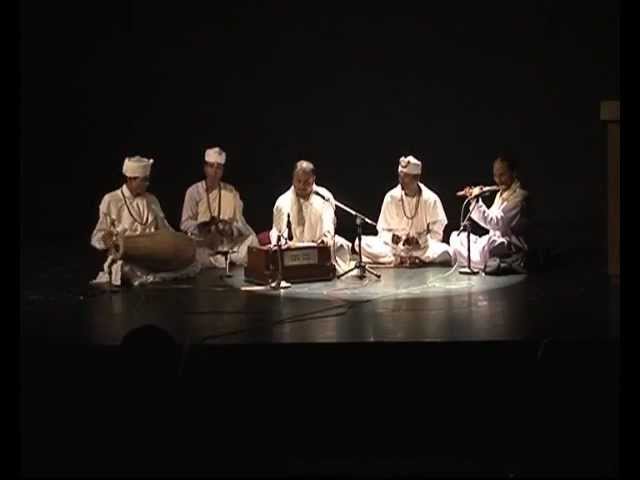
Borgeet
Devotional classical hymns composed by Srimanta Sankardeva, blending Sanskrit verses with Assamese melodies, sung in Namghars (prayer halls).

Bihu Geet
Lively folk songs celebrating the Assamese New Year, accompanied by dhol, pepa, and gogona, reflecting agrarian joy and romance.
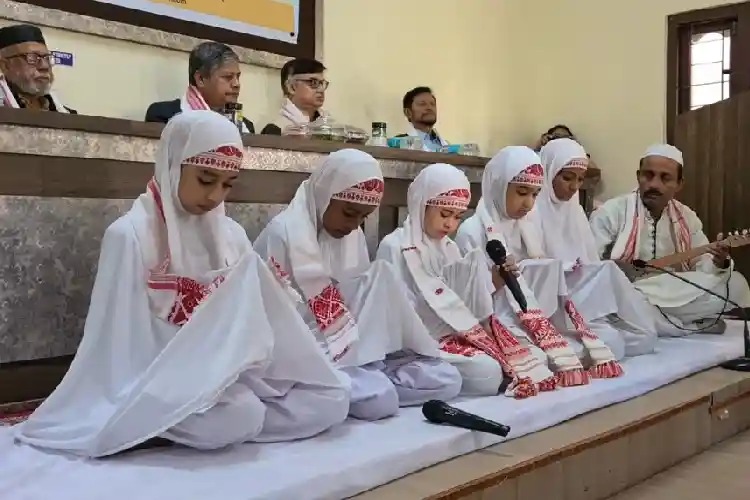
Zikir & Zari
Sufi-inspired Islamic devotional songs, featuring rhythmic chants and spiritual themes, unique to Assam’s Muslim communities.
Dance Form
Assam’s dances pulse with energy—Bihu (celebratory leaps and twirls), Sattriya (graceful monastic storytelling), and Jhumur (tea tribes’ rhythmic vigor). Folk forms like Deodhani (trance dance) and Bagurumba (Bodo butterfly dance) add tribal splendor. Each movement weaves history, faith, and Assamese identity into a mesmerizing visual rhythm.
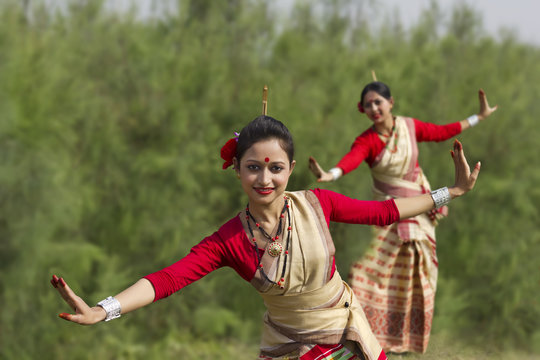
Bihu Dance
A vibrant folk dance performed during harvest festivals, marked by swift hip movements, twirls, and rhythmic beats of the dhol and pepa.
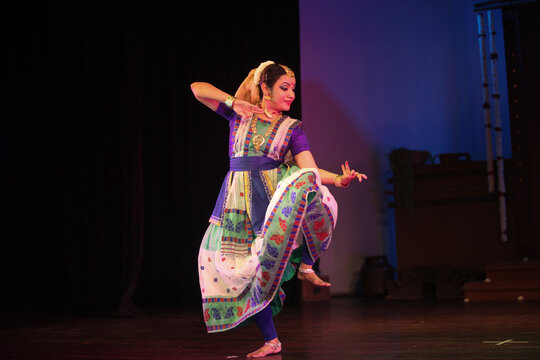
Sattriya Dance
A classical dance form originating in satras (monasteries), with graceful movements, expressive storytelling, and themes from Vaishnavite scriptures.
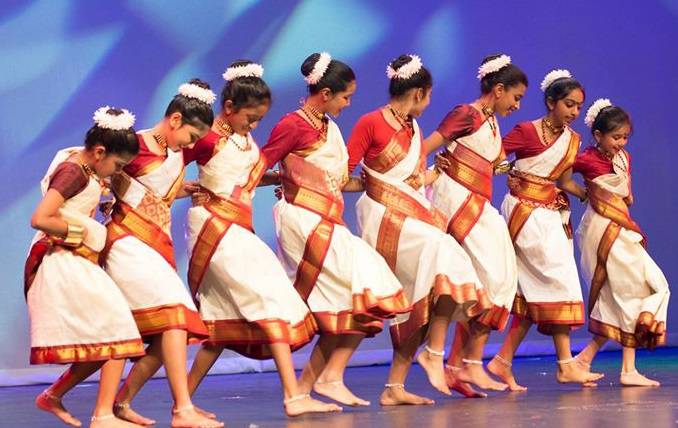
Jhumur Dance
A rhythmic tribal dance of tea garden workers, blending Assamese and Adivasi traditions, performed to folk tunes and synchronized steps.
Festivals and Celebrations
Assam’s festivals are a vibrant celebration of its agrarian heritage and deep spiritual traditions. From the joyous Bihu marking harvest seasons to the mystical Ambubachi Mela honoring divine femininity, each event pulses with cultural pride. The Majuli Festival showcases Neo-Vaishnavite arts, while Baishagu and Ali-Ai-Ligang highlight tribal traditions with dance and feasts. These celebrations weave together faith, nature, and community in a colorful tapestry of Assamese identity.
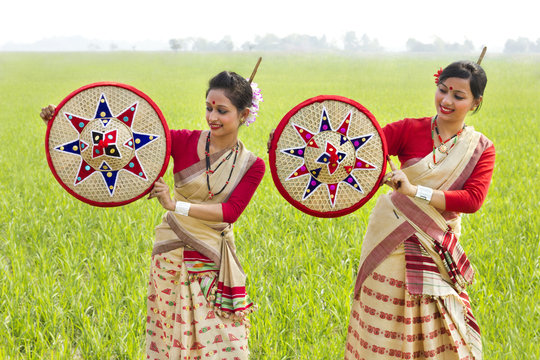
Bihu
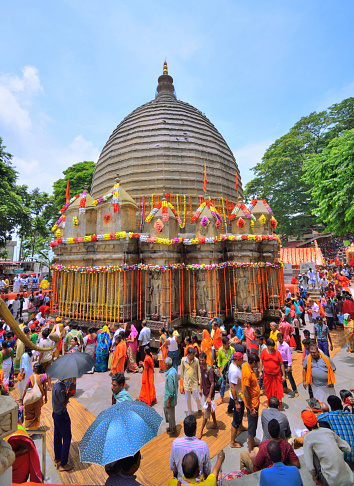
Ambubachi Mela
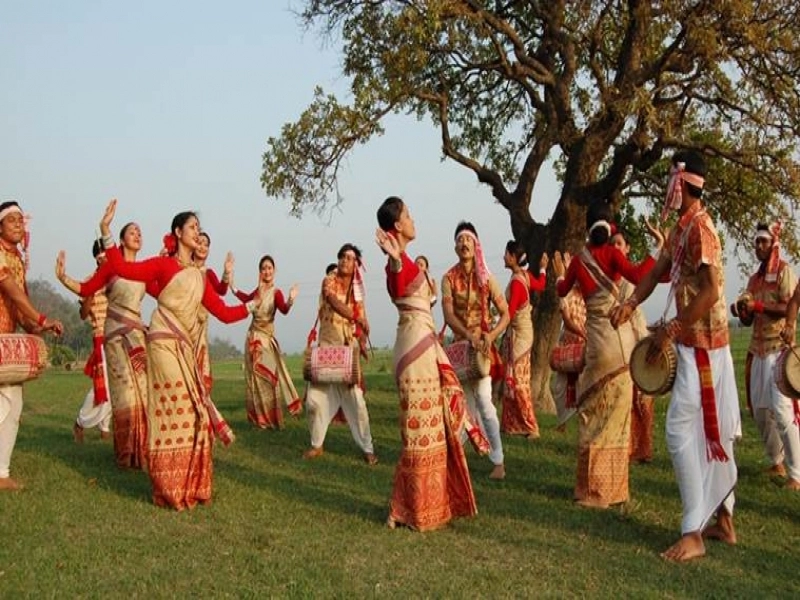
Majuli Festival
Assam’s Cuisine
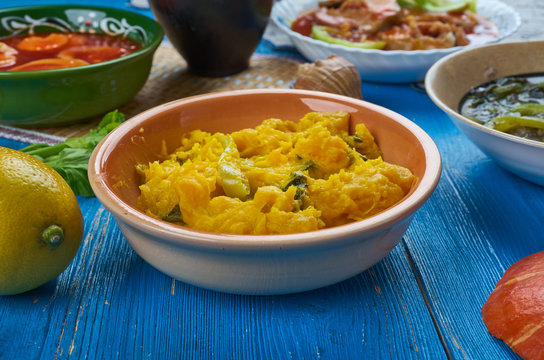
Khaar
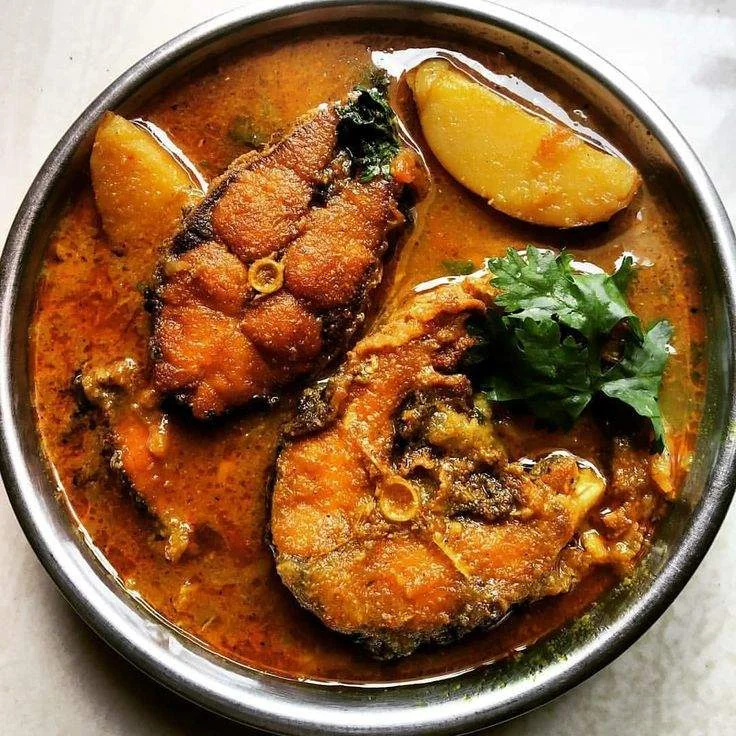
Masor Tenga
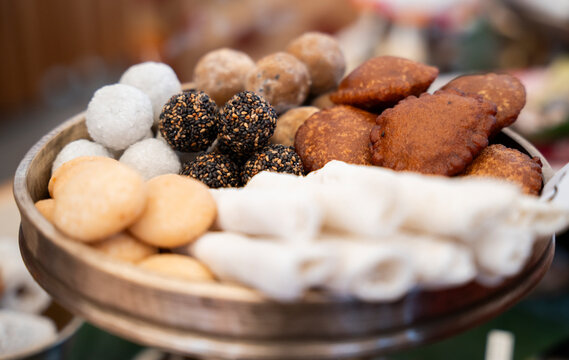
Pitha
Assamese food is simple yet flavorful, with a focus on rice, fish, and organic herbs:
Khaar: A signature dish made with raw papaya, pulses, and alkaline water.
Masor Tenga: A tangy fish curry with tomatoes and lemon.
Pitha: Rice cakes, especially popular during Bihu.
Aloo Pitika: Mashed potatoes with mustard oil and onions.
Jolpan: A traditional breakfast of flattened rice, curd, and jaggery.
Popular Shopping Items
Assam is a treasure trove of unique handicrafts and traditional products:
Assam Silk (Muga, Eri, Pat) – Luxurious handwoven silks, especially the golden Muga, prized for its durability and sheen.
Bamboo & Cane Crafts – Eco-friendly baskets, furniture, and musical instruments showcasing tribal craftsmanship.
Tea – World-famous Assam tea leaves, known for their robust flavor and rich aroma.
Gamosa – A symbolic cotton towel with red motifs, used in rituals and as a cultural emblem.
Tribal Jewelry – Exquisite handmade ornaments by indigenous communities using beads, silver, and brass.
Best shopping places: Paltan Bazaar (Guwahati), Sualkuchi (Silk Village), and local markets in Majuli and Jorhat.
Assam Silk
Bamboo & Cane Crafts
Gamosa
Tribal Jewelry
Evolution of Assam
⇒ Ancient Era: Flourished as part of the mighty Kamrupa Kingdom, referenced in the Mahabharata and Puranas, with Pragjyotishpura (modern Guwahati) as its capital.
⇒ Early Medieval Period: Ruled by the Varman and Pala dynasties, known for temple-building and Sanskrit scholarship.
⇒ Ahom Rule (1228–1826): The 600-year reign of the Ahoms brought administrative brilliance, military victories against Mughals, and a unique Buranjis (chronicles) tradition.
⇒ Colonial Era: British annexation (1826) introduced tea plantations, making Assam the world’s largest tea-growing region, and railways for resource extraction.
⇒ Post-Independence: Became a state in 1950, preserving tribal identities while facing challenges like immigration and insurgencies.
⇒ Modern Assam: Blends tribal heritage (Bodo, Mishing, Karbi), urban development (Guwahati as the gateway to NE), and ecological treasures (Kaziranga, Manas).
⇒ Cultural Resilience: Revivals of Sattriya dance, Bihu festivals, and Assamese literature highlight its enduring identity.
Folk Dance of Assam

Assam Blogs
Assam Cultural Guide
Places to Visit in Guwahati
Places to Visit in Kaziranga
Places to Visit Near Assam (Meghalaya, Arunachal)
Northeast India’s Most Popular Destinations
Assam’s Wildlife & National Parks
Assam’s Tea Tourism Guide
Recommended articles
- Recommended Articles on Bihu & Festivals
Assam’s Heritage Monuments
Best of Assam’s Local Cuisine
